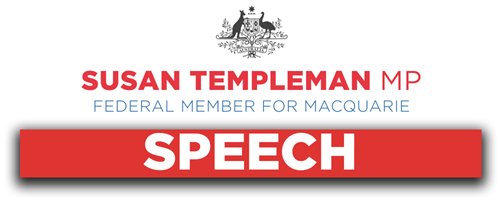
I move:
That this House:
(1) notes that:
(a) the Government has launched Revive: A Place for Every Story, A Story for Every Place (Revive), Australia's new National Cultural Policy that will set the course for Australia's arts, entertainment and cultural sector for the next five years;
(b) Revive comes after a decade of wilful neglect and funding cuts for the arts and entertainment sector;
(c) Revive is built on five pillars and puts First Nations first—recognising and respecting the crucial place of these stories at the heart of our arts and culture; and
(d) in implementing Revive, the Government will:
(i) reverse the former Government's cuts to the Australia Council for the Arts;
(ii) establish Creative Australia and create four new bodies: Music Australia, Writers Australia, First
Nations First body and a Centre for Arts and Entertainment Workplaces;
(iii) almost double the Regional Arts Fund;
(iv) introduce quotas for Australian content on digital streaming platforms; and
(v) legislate to ban fake First Nations' art; and
(2) acknowledges Revive will bring drive, direction, and vision back to the $17 billion arts industry which employs an estimated 400,000 Australians.
Australia is emerging from a dark period for the arts. For two years, the pandemic separated audiences from the creative experiences that are so connected to our wellbeing, our connection to each other and our understanding of ourselves. Theatres and galleries fell silent, choirs couldn't sing, kids couldn't dance, school plays were banned and festivals were cancelled. But we gobbled up film and TV, put art on our walls and read to get us through. That difficult period reminded Australians how much art of all types matters to our lives.
The cultural sector faced this storm in a more vulnerable position than it should have been in. The arts community had suffered from a decade of funding cuts. The infamous Brandis cuts devastated the small to medium arts sector. These small organisations are essential to the arts ecosystem, but they were abandoned by the previous government. Many organisations simply didn't survive. The previous government could never quite acknowledge that arts jobs are real jobs. When COVID hit, the government had to be dragged to support artists when they so desperately needed help. The Liberals' belated response, the RISE Fund, had no vision or strategy.
The Albanese government takes a very different approach. We've listened to the arts community. The Minister for the Arts and I, alongside the Office for the Arts, have travelled the country, holding 14 roundtable meetings to listen to ideas, concerns, insights and aspirations. We received more than 1,200 submissions and had countless one-on-one conversations.
Our new National Cultural Policy, Revive, is based on the knowledge and expertise of people from right across the nation. Revive turns the page. This government will respect, support and uplift the horizons of the arts community. Unlike the previous government, we believe that artists, not politicians, should make decisions about artistic merit. That's why we're investing in the agency that makes funding decisions at arm's length from government. We're reversing the brutal Brandis cuts and providing $199 million to the Australia Council. This means more support across all art forms, including to underfunded areas like youth arts, small to medium organisations and independent artists.
The Australia Council will be strengthened, modernised and given an expanded mandate. Its transformation into Creative Australia will be the most significant reform in its history. It'll have four new bodies. One will be the Centre for Arts and Entertainment Workplaces, which will provide advice on issues of pay, safety and welfare in the arts and entertainment sectors. It'll refer matters of workplace concern to relevant authorities and develop codes of conduct. It will address issues raised in the Raising their voices report, which detailed shocking levels of harassment, sexism and prejudice in arts workplaces. Another body, Music Australia, will support the music industry to grow through strategic initiatives, industry partnerships, research, skills development and export promotion. We'll have a First Nations body to give First Nations people autonomy over arts decisions and investments. Writers Australia will provide direct support to the literature sector for writers and publishers to grow local and international audiences for Australian books.
They are all significant steps forward, but, on top of this, we'll introduce quotas for Australian content for digital streaming platforms. We'll almost double investment in the Regional Arts Fund. We'll develop an arts and disability plan to enable people with disability to access and participate fully in the cultural and creative life of our nation. We'll provide $12 million to support digital games developers and independent games studios. We'll legislate to ban fake First Nations art and provide $3.8 million to digitise at-risk First Nations cultural material so it's preserved for future generations.
We'll introduce digital lending rights for writers and establish the role of poet laureate for Australia. We'll share the works of the National Gallery collection with regional and suburban galleries—and I know, having been in country New South Wales in the last few days, that conversations about that are already starting. We'll establish artist residencies to visit Australian World Heritage sites to produce artworks and tell stories of place and heritage.
So how are arts workers feeling? As one said, 'I didn't realise how demoralising it had been until this light came through.'


